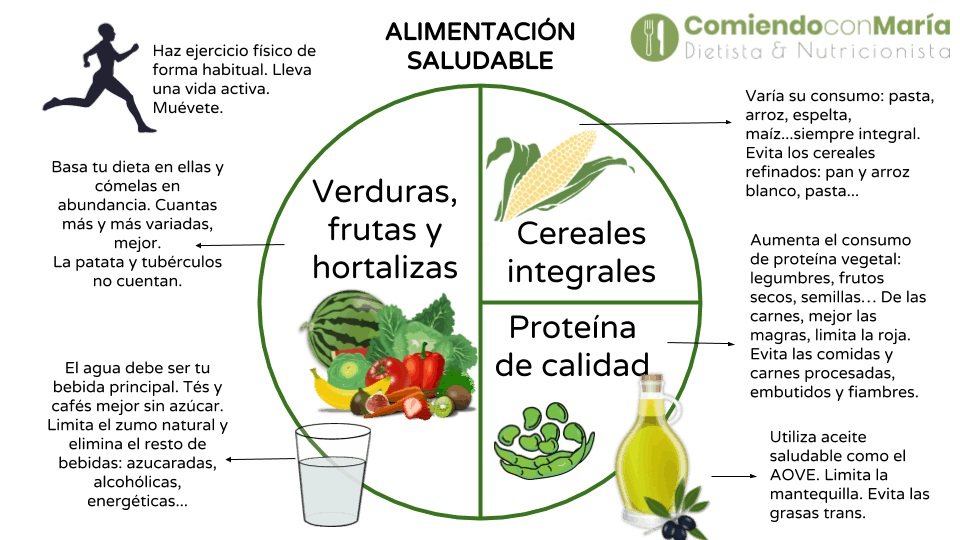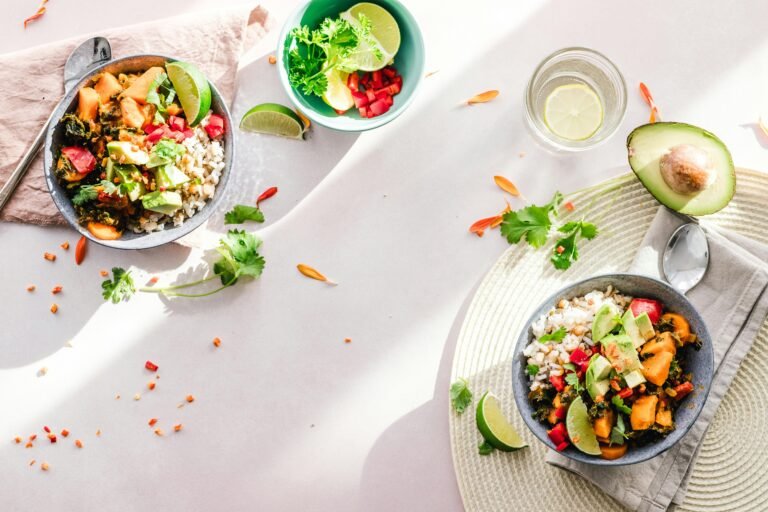How to lose 10 kilos
Discover the 5 keys to know how to lose 10 kilos easily and safely, without going hungry and learning to eat
Table of Contents
- 1 Before we start talking about how to lose 10 kilos
- 2 5 keys to lose 10 kilos
- 2.1 1. Stay away from miracle diets, miracle products and miracle formulas / methods
- 2.2 2. Set a realistic goal
- 2.3 3. Do not use diet or light products
- 2.4 4. Don’t gorge on sweeteners
- 2.5 5. Make and plan your own diet
- 3 Other factors that influence the loss of 10 kilos
Before I start talking about how to lose 10 kilos
It may seem like 10 kilos is a lot, but they are lost faster than you think. It is increasingly common for those 2 or 3 kilos that we had to lose after vacation, Christmas or summer to accumulate and become 10.
And this worries us, worries us a lot. But once again, the secret of success is in physical exercise, food and we are going to add motivation and desire to achieve it.
It is clear that it is not the same to consider losing 10 kilos as “uufff I have to lose 10 kilos” than as “well, it’s 10 kilos and I can get it.” As I explain in the nutritional coaching course , it is very important to raise and work the objective well. So before you start working on your diet and weight, start working on your goal.
When you have a clear objective (you can use the PRAMPE technique ) and trust yourself to achieve it, it will be time to start losing those 10 kilos. In this way success will be guaranteed.

5 keys to lose 10 kilos
As I have just told you, the first thing is to have the objective well formulated and to trust ourselves. Once we have this, let’s see what we have to do to lose those 10 kilos.
1. Stay away from miracle diets, miracle products , and miracle formulas / methods
It is possible that you are 10 kilos overweight as a result of following a miracle diet, relying on a miracle method or being fooled by pharmaceutical companies and their miracle products.
If there is something that you should be very clear about, it is that losing 10 kilos may be faster than you think, but that does not mean that it is easy. And it is that to lose them and maintain the loss, something essential, you must focus on changing habits and not on a diet.
So, stay away from any person, place or product that promises to lose that weight in X weeks or assures you that you will get it without knowing it. First because it is not true, and secondly because that will not be maintained over time, not to mention that you will not learn anything at all, on the contrary, it will make you believe in myths, such as that fruit from 6pm makes you fat. .
For that change of habits you need perseverance, patience and confidence. They are the pillars that will take you on the path of success and that end at your target weight. Learn to eat, internalize the changes, make them your new way of life and if someone asks you , you are not on a diet, you are taking care of yourself, loving yourself and pampering yourself .
2. Set a realistic goal
I have said that the most important thing is to be clear about the objective, but that objective is important to be realistic, in the sense that what you propose is possible to achieve, let me explain. You cannot expect to lose 10 kilos in 1 month, because your sister is getting married and you have to be divine for the wedding.
You have to know that the loss must be between 5-10% of your current weight and in a minimum time of 6 months . Many times we also wonder, but how much should I lose to go well? The answer is, between 0.5 and 1 kg of weight per week. So, if you want to lose 10 kilos, you should consider it in the long term, at least 5-10 months. Don’t be in a hurry, the road is long, but it comes to an end and there are 10 kilos less.
3. Do not resort to diet or light products
A very common mistake when it comes to losing weight (and more so when we talk about 10 kilos) is to change our diet to a diet based on light products, 0% or “with reduced content in”. These products are usually unhealthy. To begin with, they must have an original counterpart, so they must be differentiated from an unhealthy product by a minimal reduction in its caloric content.
By now you will know that the quantity is not what matters but the quality of those calories. So, and the saying goes: the monkey even if it dresses in cute silk stays, what does it matter to eat 500 kcal of oil and low-quality fats than 350 kcal of less fat and oils but more sugar.
To reduce the amount of fat they have to compensate with another ingredient, in this case sugar. And vice versa. So if you see a product with 0% fat, or “low fat” look at the amount of sugar. If, on the other hand, you see one with “0% sugars” or “no added sugars” look at the amount of fat. This is something that we have worked very well in the diaita course.
The concept of light is not synonymous with healthy, in fact it is still an ultra-processed product. We will never find a light apple. So the simple fact of finding a light product should already give us a clue that its counterpart will not be healthy either. And therefore, we should never base our diet on them, what’s more, we shouldn’t even consume them.
4. Don’t gorge on sweeteners
One thing we are clear about is that we have to eliminate sugar from the diet to achieve this loss. But many times to achieve this, what is done is to switch to sweeteners .
In my opinion it is a good alternative, as long as we are clear that it is a bridge towards total elimination. That is to say, accustomed to sugar, our body asks for sweet and a caloric option is sweeteners, but although it is true that we eliminate those calories from sugar, sweeteners are not a good option permanently.
On the one hand, our education of the palate and flavors is stunted. If we get used to eating sweet foods later, we will not like natural foods and we will always look for the sweet spot.
We will not be able to enjoy eating an apple or a yogurt, because they will not taste like anything. On the other hand, research is being done on the effects that sweeteners have on our intestinal microbiota and it is being seen that they can negatively affect the tendency to be overweight.
So instead of sweeteners you can use other healthy alternatives : unsweetened cocoa powder, cinnamon, dates, ripe fruits …
5. Make and plan your own diet
Developing and planning our own diet is not difficult and it does not have to take a long time either. I will briefly explain how to do it, bearing in mind that we want to lose 10 kilos .
The first thing is to be clear that to lose weight it is not necessary to restrict any food, beyond ultra-processed or unhealthy industrial products. In other words, we will eat any fruit, vegetable, vegetable, tuber, legume, whole grain, seed and dried fruit. We will also include whole dairy, eggs, lean meats, and fish, but we will try to eat more vegetables than animals.
The proportion of these foods will be based on the Harvard plate method shown in the image and the amount will have to be regulated and personalized, but you can try reducing your current portion a handful, and if you are hungry, eat more vegetables.
The part of whole grains (which includes rice, pasta, bread …) is dispensable, that is to say that if we are not going to make great efforts, we do not have an appetite or desire to cook, it would be the part that we could suppress. On the other hand, vegetables and proteins cannot be missing either in lunch or dinner. Outside of the main meals, that is to say at breakfast, mid-morning and snack, we can eat any food that appears on the plate.

To know when to eat each protein or how often to eat each food, you only need to know the frequency of consumption of these foods (SENC, 2004), which is:
- Potato, cereals and bread (wholemeal): 4-6 servings a day.
- Vegetables and vegetables: minimum 2 servings per day.
- Fruits: minimum 3 servings a day.
- Olive oil: 3-6 servings a day.
- Milk and derivatives: 2-4 servings per day.
- Fish: 3-4 servings a week.
- Meat and eggs: 3-4 servings a week.
- Legumes: 2-4 servings a week.
- Nuts: 3-7 servings a week.
With all this, you only have to put it on paper, this is an example weekly menu to lose 10 kilos :Other factors that influence the loss of 10 kilos
There are many factors that influence weight loss in addition to diet. So I advise you that while you take care of your diet, monitor and control your environment and become an active person, and if you already were, start practicing physical exercise on a regular basis.
Work on motivation and confidence in yourself with nutritional coaching and pamper yourself as much as you can. You must be your priority. In this way you will get what you want, you must take yourself into account and respect yourself. Taking pleasure in taking care of yourself is essential to following a healthy lifestyle.
This implies not taking your diet as a punishment but as a gift, not prioritizing others and obligations above yourself, not having toxic and self-destructive habits such as smoking, etc. In addition to resting the necessary hours at night and practicing physical exercise.
If after applying all these tips and carrying out these changes you cannot lose 10 kilos, ask for help from a dietitian-nutritionist who works with you and helps you achieve it. In the online consultation of Eating with Mary specialized in weight loss, you have the first free visit.




















+ There are no comments
Add yours